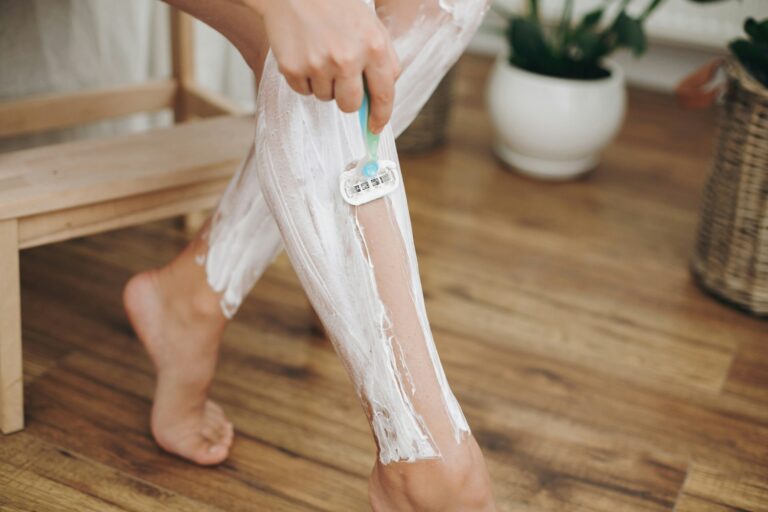October 1, 2024
Removing unwanted hair is a common beauty ritual for many of us. With numerous methods to choose from, it’s important to understand which options are the safest and most effective. Making the right choice can help you avoid skin irritation, ingrown hairs, and other complications.
In this article, we will explore various hair removal techniques, offering insights into their advantages and disadvantages. Whether you prefer shaving, waxing, laser treatments, or other methods, we’ll provide expert advice from dermatologists to guide you.
Understanding Different Hair Removal Methods
There are several methods available for removing unwanted hair, each with its own benefits and drawbacks. Understanding these methods can help you choose the one that suits your skin type and lifestyle best. Common hair removal techniques include shaving, waxing, laser treatments, electrolysis, and depilatory creams.
Shaving is quick and easy but may lead to skin irritation and ingrown hairs. Waxing provides longer-lasting results but can be painful and requires hair to be a certain length before removal. Laser hair removal offers permanent reduction but requires multiple sessions and can be costly. Electrolysis is the only FDA-approved method for permanent hair removal, but it can be time-consuming. Depilatory creams dissolve hair chemically, providing a painless option, though they might cause skin reactions due to the chemicals involved.
Choosing the right method depends on factors like your pain tolerance, budget, and the particular area of the body you’re targeting. Consulting with a dermatologist can help you understand which method is most suitable for your needs.
Shaving: Pros and Cons
Shaving is one of the most common and accessible methods of hair removal. It involves cutting the hair at the skin’s surface using a razor. This method is popular due to its ease and the fact that it can be done quickly at home.
Pros:
- Convenience: Shaving can be done quickly and easily at home.
- Cost-Effective: Razors and shaving cream are relatively inexpensive.
- Painless: When done correctly, shaving is relatively painless.
Cons:
- Temporary Results: Since hair is cut at the skin level, it grows back quickly, often within a few days.
- Skin Irritation: Shaving can cause razor burn, cuts, and ingrown hairs, especially if you have sensitive skin.
- Maintenance: Requires frequent upkeep to keep skin smooth.
Using a sharp razor and a good shaving cream or gel can minimize irritation. It’s also important to shave in the direction of hair growth to avoid razor bumps.
Waxing: Benefits and Drawbacks
Waxing is a popular hair removal method that involves applying warm wax to the skin and then removing it quickly, pulling out the hair from the root. This method is known for its longer-lasting results compared to shaving.
Benefits:
- Long-Lasting: Hair takes longer to grow back compared to shaving, often remaining smooth for three to six weeks.
- Finer Hair: With regular waxing, regrown hair tends to be finer and softer over time.
- Exfoliation: Waxing removes dead skin cells along with unwanted hair, leaving skin smoother.
Drawbacks:
- Pain: Waxing can be quite painful, especially for those with low pain tolerance.
- Cost: Professional waxing can be costly, and at-home kits may not be as effective.
- Ingrown Hairs: While less common than with shaving, ingrown hairs can still occur with waxing.
Proper aftercare, such as using soothing lotions and avoiding tight clothing, can help reduce irritation post-waxing. It’s also best to exfoliate regularly between sessions to prevent ingrown hairs.
Laser Hair Removal: How It Works
Laser hair removal is a popular option for those seeking long-term hair reduction. This method uses concentrated light beams to target and destroy hair follicles, inhibiting future growth.
The procedure involves a laser emitting a light that is absorbed by the pigment in the hair. The light energy converts to heat, which damages the hair follicles. This process significantly slows down hair growth after several sessions and may lead to permanent hair reduction. Most people require multiple treatments, spaced several weeks apart, to achieve optimal results.
One key advantage of laser hair removal is its precision. It can selectively target dark, coarse hairs while leaving the surrounding skin undamaged. Moreover, treated hairs generally fall out within a few weeks, leading to smoother skin over time.
However, this method does have some limitations. It’s most effective on individuals with light skin and dark hair due to the contrast allowing better absorption of the laser light by the hair pigment. The treatment can be expensive and may cause temporary side effects such as redness, swelling, and discomfort in the treated area.
To ensure safety and effectiveness, it’s crucial to have laser hair removal performed by a trained dermatologist or certified technician. This minimizes risks and maximizes the benefits of this advanced hair removal method.
Electrolysis: The Permanent Solution
Electrolysis is the only FDA-approved method for permanent hair removal. It involves inserting a tiny probe into the hair follicle and using an electric current to destroy the follicle’s growth centre.
This method is considered permanent because it targets each hair follicle individually, preventing hair from regrowing. It is suitable for all skin types and hair colours, making it an inclusive option. Unlike laser hair removal, electrolysis works on both light and dark hairs.
However, electrolysis can be time-consuming because each hair follicle must be treated individually. Multiple sessions are required to target all hair effectively, and the treatment can be painful, sometimes requiring a topical anaesthetic. Despite these drawbacks, the permanence of electrolysis makes it a worthwhile investment for those seeking a long-term solution for unwanted hair.
Depilatory Creams: Are They Safe?
Depilatory creams offer a painless alternative for hair removal. These creams contain chemicals that break down the protein structure of the hair, causing it to dissolve and wash away easily.
Benefits:
- Painless: The application process is simple, and there’s no discomfort during hair removal.
- Quick Results: The hair dissolves within minutes, making it a fast option.
- Accessibility: These creams are widely available and affordable.
Drawbacks:
- Chemical Sensitivity: Some people have adverse reactions to the chemicals, experiencing redness, irritation, or allergic reactions.
- Temporary Results: Hair grows back as quickly as it does with shaving because the cream only dissolves hair at the surface.
- Odour: Depilatory creams can have a strong, unpleasant smell.
Before using any depilatory cream, it’s essential to do a patch test to check for any allergic reactions. Following the instructions carefully can help minimize the risk of skin irritation.
Tips for Reducing Pain During Hair Removal
Hair removal can be painful, but there are ways to reduce discomfort. Here are some effective tips:
- Numb the Area: Apply a numbing cream or take over-the-counter pain relief medication before waxing or laser treatments.
- Exfoliate: Exfoliating your skin before hair removal can help reduce pain by removing dead skin cells and allowing for smoother extraction.
- Keep Skin Taut: Holding the skin tight during waxing can reduce the pain of pulling the hair out.
- Warm Baths or Showers: Taking a warm bath or shower before waxing can open up the pores, making hair removal less painful.
- High-Quality Products: Using high-quality razors, wax, or other hair removal products can decrease the discomfort you might experience.
Post-Treatment Care and Skin Soothing Techniques
After hair removal, proper post-treatment care is crucial to keep your skin healthy and irritation-free. Here’s how you can soothe your skin:
Post-Treatment Care:
- Cool Compresses: Apply cool, damp cloths to the treated area to reduce redness and swelling.
- Moisturize: Use a gentle, fragrance-free moisturizer to keep your skin hydrated and prevent dryness.
- Avoid Heat: Steer clear of hot baths, saunas, and direct sunlight for at least 24 hours after hair removal.
Skin Soothing Techniques:
- Aloe Vera: Apply aloe vera gel to the treated area for its soothing and anti-inflammatory properties.
- Anti-Inflammatory Creams: Use creams containing hydrocortisone to reduce swelling and itchiness.
- Loose Clothing: Wear loose-fitting clothes to prevent friction and irritation on the treated skin.
Choosing the Right Hair Removal Method for Your Skin Type
Selecting the best hair removal method depends largely on your skin type. Each method has its strengths and weaknesses, and understanding your skin type can help you avoid potential complications like irritation or ingrown hairs.
- Normal Skin: Most hair removal methods work well for normal skin. Shaving, waxing, and laser treatments are usually safe choices.
- Sensitive Skin: If you have sensitive skin, consider avoiding methods like waxing or certain depilatory creams that can cause irritation. Shaving with a sharp razor and plenty of shaving cream can be gentle enough. Laser hair removal, performed by a professional, is another option as it typically results in less irritation over time.
- Dry Skin: For dry skin, moisturizing before and after hair removal is critical. Methods like waxing and shaving can exacerbate dryness, so make sure to use gentle moisturizing products alongside these techniques.
- Oily Skin: Oily skin can benefit from methods that remove hair from the roots, like waxing or laser treatments. These methods help reduce the frequency of hair removal sessions and can reduce the chances of clogged pores.
Removing unwanted hair can be a daunting task with so many options available, but understanding each method can help you make an informed decision. Whether you opt for shaving, waxing, laser treatments, or electrolysis, it’s crucial to choose a method that suits your skin type and needs. Proper preparation, following aftercare tips, and avoiding common mistakes can make the process smoother and more effective.
For expert advice and top-notch laser hair removal treatments in Edmonton, contact VIDA Dermatology at West and South location. Our experienced team is here to help you achieve your skin goals safely and effectively. Schedule your consultation today!



